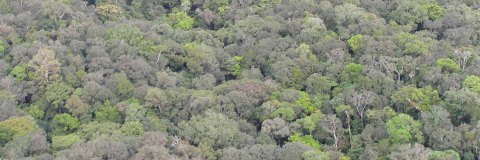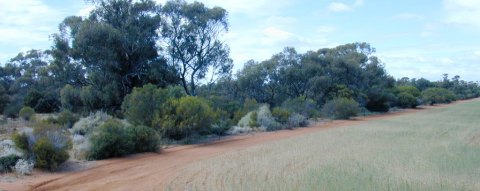Home | About CCW | Contact Us | Climate change Meaning | Causes | Solutions | Emissions | Carbon trading
Deforestation
Deforestation describes human activities that clear naturally occurring forests through logging, burning of trees in forests or both.
Trees are important. Not only do they fix and hold onto carbon – up to 22 kg per year – they provide structure, shelter and shade above ground and structure, binding and resources belowground. We may not see them often but roots are as much a part of trees as the trunk and leaves.
Trees…
- bind soil
- hold nutrients in store
- recycle nutrients
- create livable space
- get eaten by a multitude of creatures
- transpire
- create micro-climates
..the list goes on.
And we know this.
Rainforests are especially important as carbon sinks and provide a natural stabilizing effect on local and even global climate.

rainforest in the highlands of Papua New Guinea
We are aware of this importance of forests. We even invent slogans like “trees are life” to remind us and yet the numbers for deforestation are sobering.
Since the process began to accelerate in the 1850’s around 7.5 million km2 of forest has been cleared around the globe – that is roughly half of the original amount of standing forest.
Just to give an idea, the land area of the US is 9.2 million km2
We really like to cut down trees.
And although we know trees are good for us, we are still cutting them down at rates that will see intact forests at just 10% of their original extent by 2030.
This means that most of the people who are 50 years old or younger today will live to see a world that has lost 90% of the forest that was around at the time of their great-grandfathers.
So why do we do it?
We use the timber, make charcoal and use firewood but mostly we want the land cleared of trees to grow crops and graze animals for food.
The great loss of forests has paralleled the great rise in human numbers – more than 5 billion new people since 1850.
Back then there were only 1.2 billion of us, and our agricultural land was enough. Crops and livestock for 5 billion people takes a great deal of space and the forests have given it up.
Deforestation is also a cause of climate change.
Take trees away and you reduce the capacity for the land to let water infiltrate, be stored and then released through transpiration back to the atmosphere. In effect you remove one of the localized water cycling system – the ancient Greeks figured this out first and there have been many measurements made since.
Forested lands are generally cooler, wetter and less prone to extremes than cleared landscapes.

So when forests are cleared we should expect warmer and drier conditions.
The challenge is that once you add wind, warmer and drier can become much warmer and a lot drier. A feedback mechanism.
Stand on a bluff overlooking a forest and the breeze will be wetter and cooler than a similar bluff overlooking wheat fields. You may even ask yourself “what is it with this drying wind?”
Deforestation as a cause of climate change is more of an accelerator, a localized agitator of bigger effects.
It is better, perhaps, to think of forests as buffers against the changes brought about by other causes of climate change; a key element in the process of adaptation.
Because we will seek all options to suck carbon from the atmosphere, in the end we will have to replant a significant proportion of the 7.5 million km2 of forests we have cleared with trees.
Back to top of Deforestation | Return from Deforestation to What causes climate change | Return to Climate-change-wisdom home page
Recent Articles
-
Reducing emissions while looking for solutions...
Nov 01, 15 04:46 PM
I've seen a lot of post's online for ideas on reducing emissions. The one suggestion I have not seen, is the most obvious. There should be a government -
Climate change evidence
Mar 24, 15 06:22 AM
Real climate change evidence has to demonstrate a change in climate. An extra sunny day or a severe storm or a flood is not enough. -
The climate change effect
Feb 19, 15 03:08 AM
What will be the climate change effect? There isn't one, there are many. Perhaps too many for us to understand.

New! Comments
Have your say about what you just read! Leave me a comment in the box below.